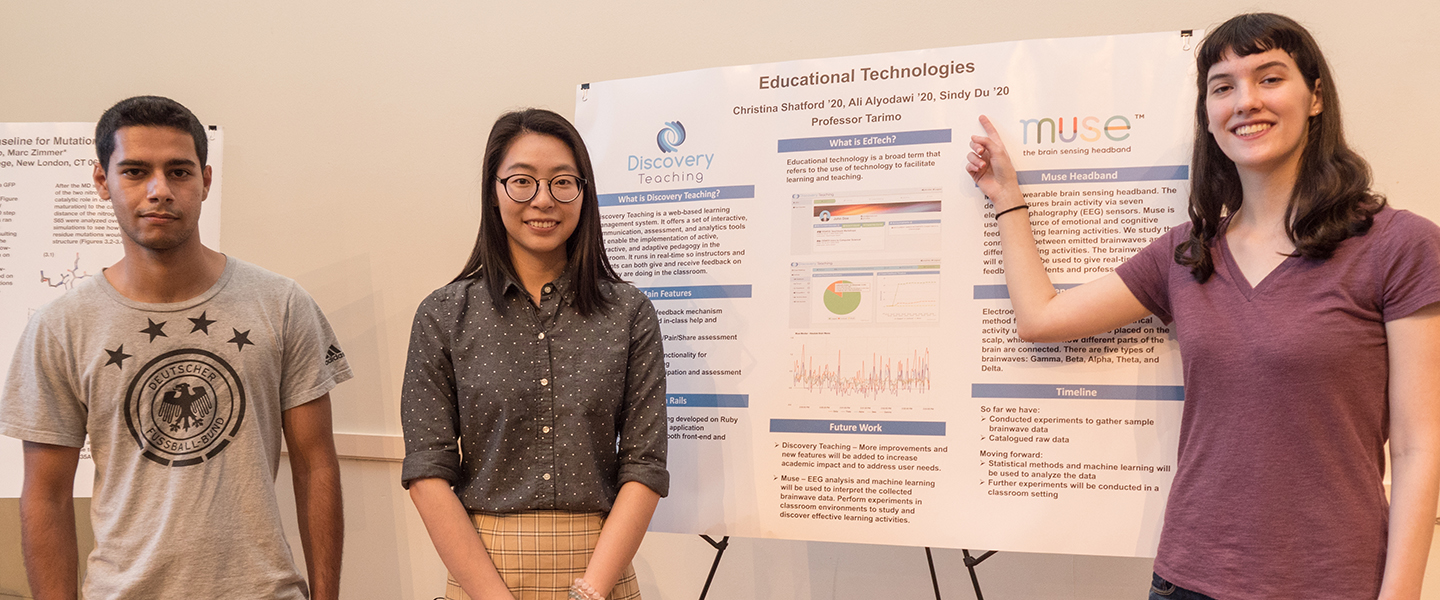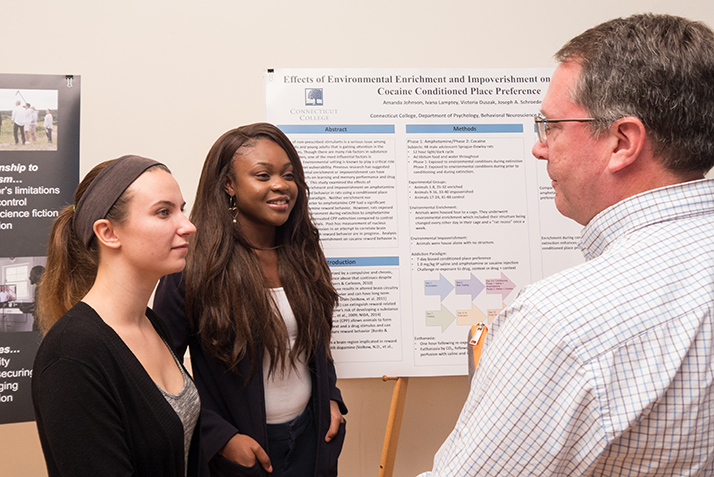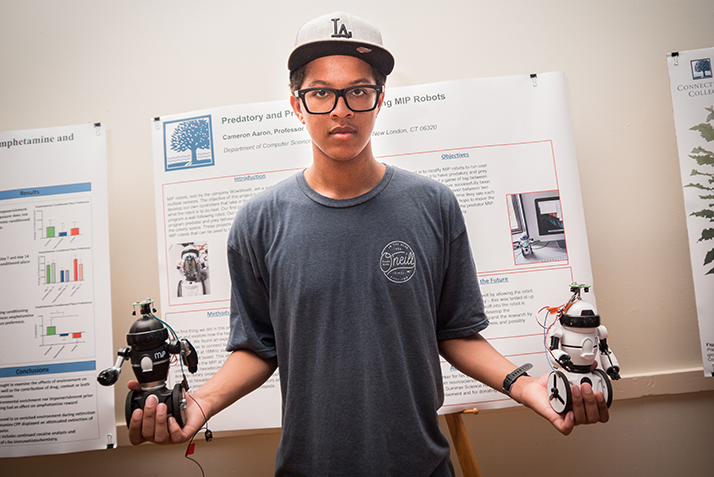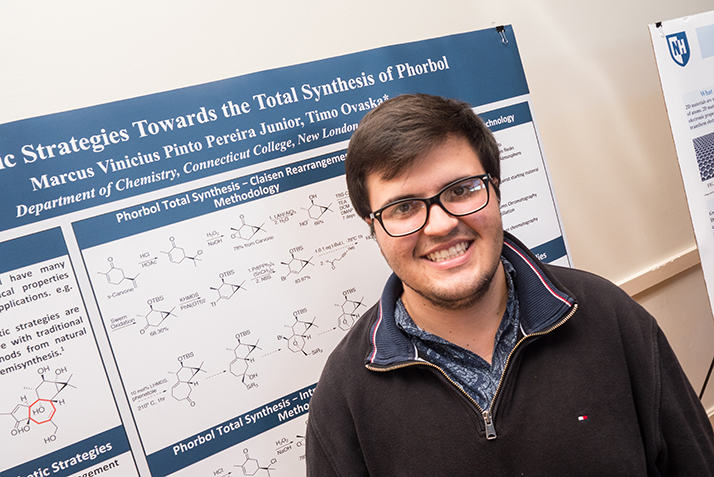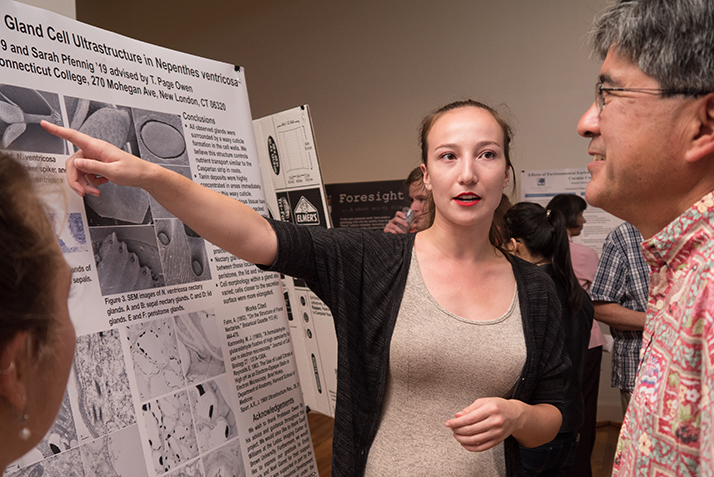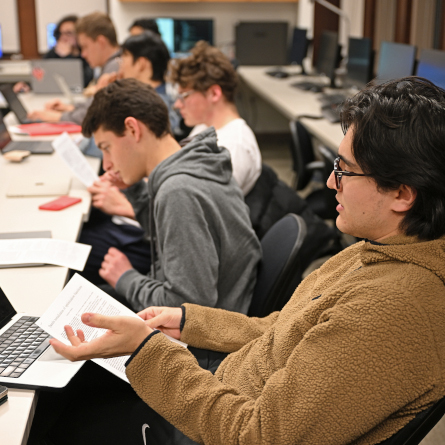
Summer science researchers present at symposium
Over the summer, Isis Torres Nuñez ’20 spent several weeks in Conn’s Hale Laboratory defending the reputation of microbes.
“There’s a common misconception that all microbes are harmful, but some are crucial for our survival and don’t cause maladies,” explained Torres Nuñez, a biochemistry, cellular and molecular biology major who participated in the College’s summer science research program, which culminated with a symposium on campus Oct. 5.
“It’s gratifying to see everyone’s work on display,” said Torres Nuñez. “But it’s even more gratifying to see the community so engaged and interested in what we’ve done. The symposium definitely serves as a bridge for us scientists to relay our research to other scientists on campus and even to non-scientists, to people who are not so familiar with it.”
The summer program which leads to the poster symposium involves an intensive, 8-10-week collaboration in which a select group of students conduct funded research with faculty members on projects relating to their specific fields of science.
Jean C. Tempel '65 Professor of Chemistry Marc Zimmer is one of the faculty members who led a research project over the summer. Zimmer emphasized the importance of the program for students looking to enhance their research skills and lay an early foundation they can build on for graduate school, or for a career in science or medicine.
“Science is like a language,” Zimmer said. “Our language students go abroad to immerse themselves in world languages, and to really learn the practice of science, our students have to immerse themselves in science, doing research five days a week for at least eight weeks."
The summer program, which provides a stipend and campus housing, offers an early opportunity for students to work closely with faculty and then practice the skills needed to present their research at conferences or in graduate school.
Justin Nwafor ’21, who is pursuing a major in chemistry, worked on two separate projects over the summer.
The first, under the guidance of Zimmer, involved using computational chemistry to aide in the study of Green Fluorescent Protein structures. The second, in collaboration with Margaret W. Kelly Professor of Chemistry Stanton Ching, focused on finding innovative water treatment methods, specifically with the use of manganese oxides, which have been shown to be effective in degrading materials that are resistant to common water treatments, yet are non-toxic and more cost effective.
“This poster symposium was really a nice conclusion to the summer research program, because everyone now gets to display what they did (or in the case of some of us, are continuing to do) from the summer until now,” Nwafor said.
